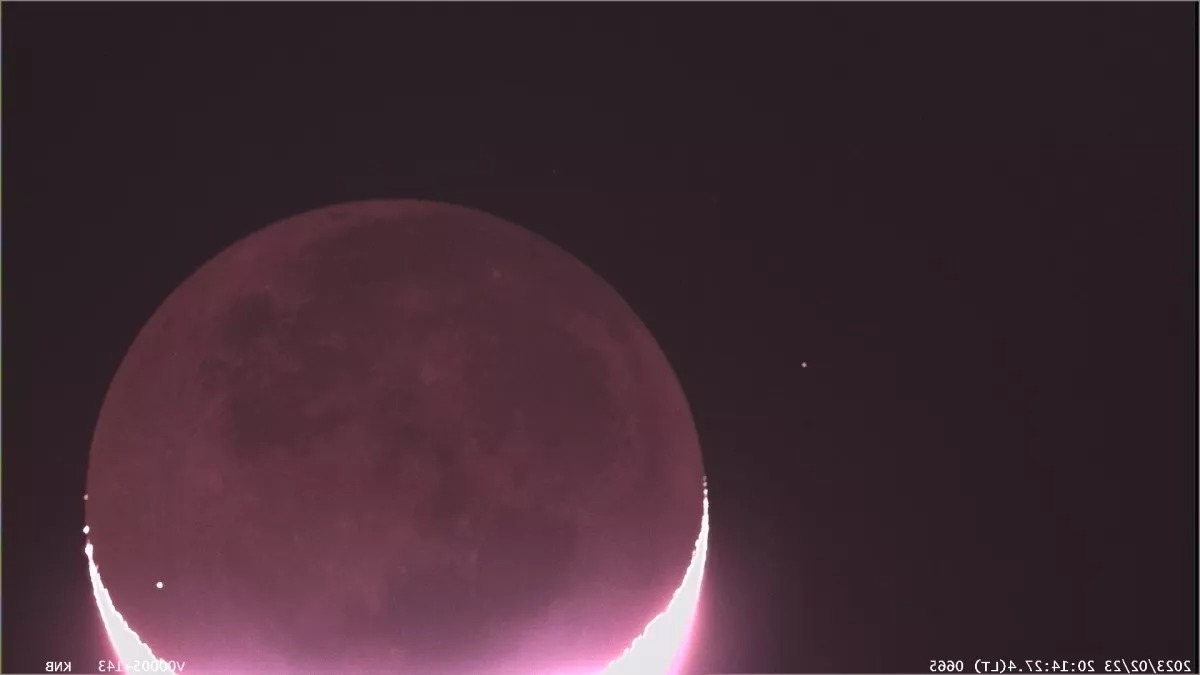During his observations, the Japanese astronomer managed to take a video of a bright flash on the Moon, formed as a result of a meteorite falling on the shaded part of our celestial neighbor.

The curator of the Hiratsuka City Museum Daichi Fujii recorded the event using cameras installed to observe the Moon. The event took place on February 23. The meteorite fell near Ideler crater, slightly northwest of Pitiscus crater, Fujii said.
私の観測史上最大の月面衝突閃光を捉えることができました!2023年2月23日20時14分30.8秒に出現した月面衝突閃光を、平塚の自宅から撮影した様子です(実際の速度で再生)。なんと1秒以上も光り続ける巨大閃光でした。月は大気がないため流星や火球は見られず、クレーターができる瞬間に光ります。 pic.twitter.com/Bi2JhQa9Q0
— 藤井大地 (@dfuji1) February 24, 2023
The speed of meteorites averages 13.4 km/s (48 280 km/h). During a collision at such a high speed, a lot of energy is released, as well as a bright flash of visible light is emitted. Impacts on the Moon can be seen from Earth, as shown above, if they are strong enough and occur in a shaded area visible from our planet.
Given the brightness of the flash, the astronomer believes that a meteorite impact on the Moon may have formed a crater with a diameter of 10-12 m. It can even be seen by the NASA Lunar Reconnaissance Orbiter or the Indian lunar probe Chandrayaan-2, Fujii says.
Meteorites also collide with the Earth on a daily basis, but most of them completely burn up when they come into contact with the atmosphere. However, there is almost no atmosphere on the Moon, so even small meteorites reach the surface, constantly forming a landscape covered with craters. These rocks constantly collide with the lunar surface, sometimes breaking it down to small particles, forming lunar soil, which will create problems for future astronauts of the Artemis program, because it is very difficult to get rid of it.
Earlier we reported on how scientists calculated the risk of a meteorite impact on a person on the Moon.
Follow us on Twitter to get the most interesting space news in time
https://twitter.com/ust_magazine

